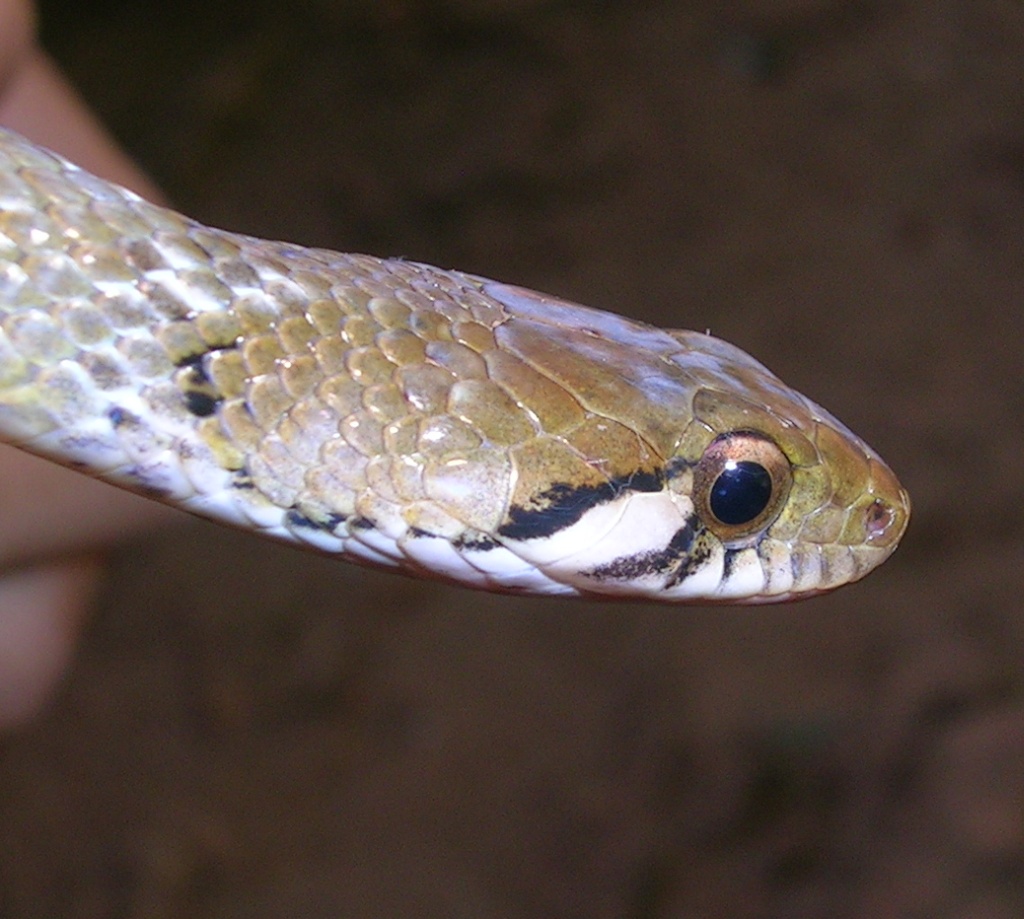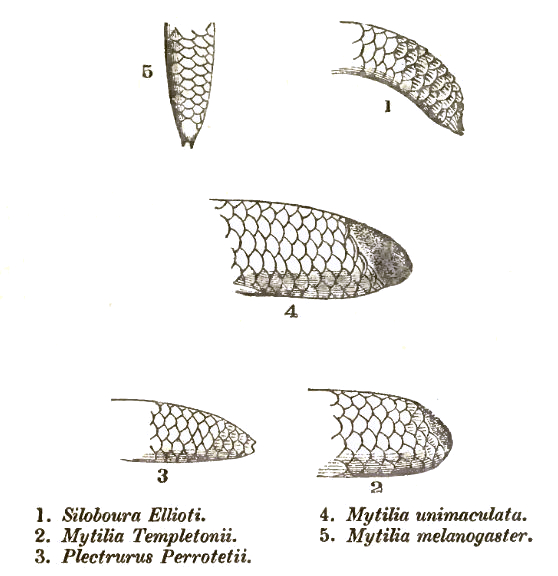|
Rhinophis Sanguineus
''Rhinophis sanguineus'', commonly known as the salty earth snake, is a species of Uropeltidae, uropeltid snake found in the Western Ghats of India. Description Description after Beddome (1864: 178): "Scales of the body large, in 15 rows; of the anterior portion of the trunk sometimes in 17; rostral much produced, very sharp, conical, horny, produced back, and covering the conjunction of the nasals; nostril in front of nasal shield; eye very small and obscure, [located] in front [portion] of ocular shield; four upper labials, 1st small, 2nd, 3rd, and 4th large; caudal disk nearly as long as tail, oblong, covered with excrescences, a red streak down the centre and one on each side. Colour of the body bluish black; belly bright red, with blackish mottlings; anal bifid; subcaudals of the male 9 or 10 pairs, each with 4 to 6 keels, and some of the approximated ventral plates and a few of the two lowest rows of scales also keeled; female subcaudals 6 or 7. Total length of large male 1 ... [...More Info...] [...Related Items...] OR: [Wikipedia] [Google] [Baidu] |
Richard Henry Beddome
Colonel Richard Henry Beddome (11 May 1830 – 23 February 1911) was a British military officer and naturalist in India, who became chief conservator of the Madras Forest Department. In the mid-19th century, he extensively surveyed several remote and then-unexplored hill ranges in Sri Lanka and south India, including those in the Eastern Ghats such as Yelandur, Kollegal, Shevaroy Hills, Yelagiri, Nallamala Hills, Visakhapatnam hills, and the Western Ghats such as Nilgiri hills, Anaimalai hills, Agasthyamalai Hills and Kudremukh. He described many species of plants, amphibians, and reptiles from southern India and Sri Lanka, and several species from this region described by others bear his name. Early life Richard was the eldest son of Richard Boswell Brandon Beddome, solicitor, of Clapham Common, S.W. He was educated at Charterhouse School and trained for the legal profession, but preferred to join the East India Company at the age of 18 and joined the 42nd Madras Native I ... [...More Info...] [...Related Items...] OR: [Wikipedia] [Google] [Baidu] |
George Albert Boulenger
George Albert Boulenger (19 October 1858 – 23 November 1937) was a Belgian-British zoologist who described and gave scientific names to over 2,000 new animal species, chiefly fish, reptiles, and amphibians. Boulenger was also an active botanist during the last 30 years of his life, especially in the study of roses. Life Boulenger was born in Brussels, Belgium, the only son of Gustave Boulenger, a Belgian public notary, and Juliette Piérart, from Valenciennes. He graduated in 1876 from the Free University of Brussels with a degree in natural sciences, and worked for a while at the Royal Belgian Institute of Natural Sciences, Brussels, as an assistant naturalist studying amphibians, reptiles, and fishes. He also made frequent visits during this time to the ''Muséum national d'Histoire naturelle'' in Paris and the British Museum in London. In 1880, he was invited to work at the Natural History Museum, then a department of the British Museum, by Dr. Albert C. L. G. Günther a ... [...More Info...] [...Related Items...] OR: [Wikipedia] [Google] [Baidu] |
Species
In biology, a species is the basic unit of classification and a taxonomic rank of an organism, as well as a unit of biodiversity. A species is often defined as the largest group of organisms in which any two individuals of the appropriate sexes or mating types can produce fertile offspring, typically by sexual reproduction. Other ways of defining species include their karyotype, DNA sequence, morphology, behaviour or ecological niche. In addition, paleontologists use the concept of the chronospecies since fossil reproduction cannot be examined. The most recent rigorous estimate for the total number of species of eukaryotes is between 8 and 8.7 million. However, only about 14% of these had been described by 2011. All species (except viruses) are given a two-part name, a "binomial". The first part of a binomial is the genus to which the species belongs. The second part is called the specific name or the specific epithet (in botanical nomenclature, also sometimes i ... [...More Info...] [...Related Items...] OR: [Wikipedia] [Google] [Baidu] |
Uropeltidae
The Uropeltidae, also known Common name, commonly as the shieldtails or the shield-tailed snakes, are a Family (biology), family of primitive, nonvenomous, burrowing snakes native to peninsular India and Sri Lanka. The name is derived from the Greek words ('tail') and ('shield'), indicating the presence of the large keratinous shield at the tip of the tail. Seven or eight genus, genera are recognized, depending on whether ''Teretrurus rhodogaster'' is treated in its own genus or as part of ''Brachyophidium''. The family comprises over 50 species. These snakes are not well known in terms of their diversity, biology, and natural history. Description Snakes in the family Uropeltidae are small snakes, with adults growing to a total length (including tail) of . They are adapted to a fossorial way of life, which is apparent in their anatomy. The skull is primitive and inflexible, with a short, vertical quadrate bone and rigid jaws; the coronoid bone is still present in the lower jaw. ... [...More Info...] [...Related Items...] OR: [Wikipedia] [Google] [Baidu] |
India
India, officially the Republic of India (Hindi: ), is a country in South Asia. It is the seventh-largest country by area, the second-most populous country, and the most populous democracy in the world. Bounded by the Indian Ocean on the south, the Arabian Sea on the southwest, and the Bay of Bengal on the southeast, it shares land borders with Pakistan to the west; China, Nepal, and Bhutan to the north; and Bangladesh and Myanmar to the east. In the Indian Ocean, India is in the vicinity of Sri Lanka and the Maldives; its Andaman and Nicobar Islands share a maritime border with Thailand, Myanmar, and Indonesia. Modern humans arrived on the Indian subcontinent from Africa no later than 55,000 years ago., "Y-Chromosome and Mt-DNA data support the colonization of South Asia by modern humans originating in Africa. ... Coalescence dates for most non-European populations average to between 73–55 ka.", "Modern human beings—''Homo sapiens''—originated in Africa. Then, int ... [...More Info...] [...Related Items...] OR: [Wikipedia] [Google] [Baidu] |
Wayanad
Wayanad () is a district in the north-east of Indian state Kerala with administrative headquarters at the municipality of Kalpetta. It is the only plateau in Kerala. The Wayanad Plateau forms a continuation of the Mysore Plateau, the southern portion of Deccan Plateau. It is set high in the Western Ghats with altitudes ranging from 700 to 2100 meters. Vellari Mala, a high peak situated on the trijunction of Wayanad, Malappuram, and Kozhikode districts, is the highest point in Wayanad district. The district was formed on 1 November 1980 as the 12th district in Kerala, by carving out areas from Kozhikode and Kannur districts. An area of 885.92 km2 of the district is forested. Wayanad has three municipal towns—Kalpetta, Mananthavady and Sulthan Bathery. There are many indigenous tribes in this area. The Kabini River, a tributary of Kaveri River, originates at Wayanad. Wayanad district, along with the Chaliyar valley in neighbouring Nilambur (Eastern Eranad region) in Ma ... [...More Info...] [...Related Items...] OR: [Wikipedia] [Google] [Baidu] |
Rhinophis
:''Common names:'' ''shield tail snakes'', ''earth snakes''. ''Rhinophis'' is a genus of nonvenomous shield tail snakes found in Sri Lanka and South India. Currently, 24 species (with no subspecies) are recognized in this genus. Of the 24 species, 18 are endemic to Sri Lanka, while six are endemic to South India. Geographic range Found mainly in Sri Lanka and also in southern India. In Sri Lanka, this genus also occurs in low plains in the dry zone. Species *) Not including the nominate subspecies. ) Type species In zoological nomenclature, a type species (''species typica'') is the species name with which the name of a genus or subgenus is considered to be permanently taxonomically associated, i.e., the species that contains the biological type specimen .... References External links * * Aengals, R.; S. R. Ganesh 2013. Rhinophis goweri — A New Species of Shieldtail Snake from the Southern Eastern Ghats, India. Russ. J. Herpetol. 20 (1): 61-65. * Ganesh, S. R. 2015. ... [...More Info...] [...Related Items...] OR: [Wikipedia] [Google] [Baidu] |




